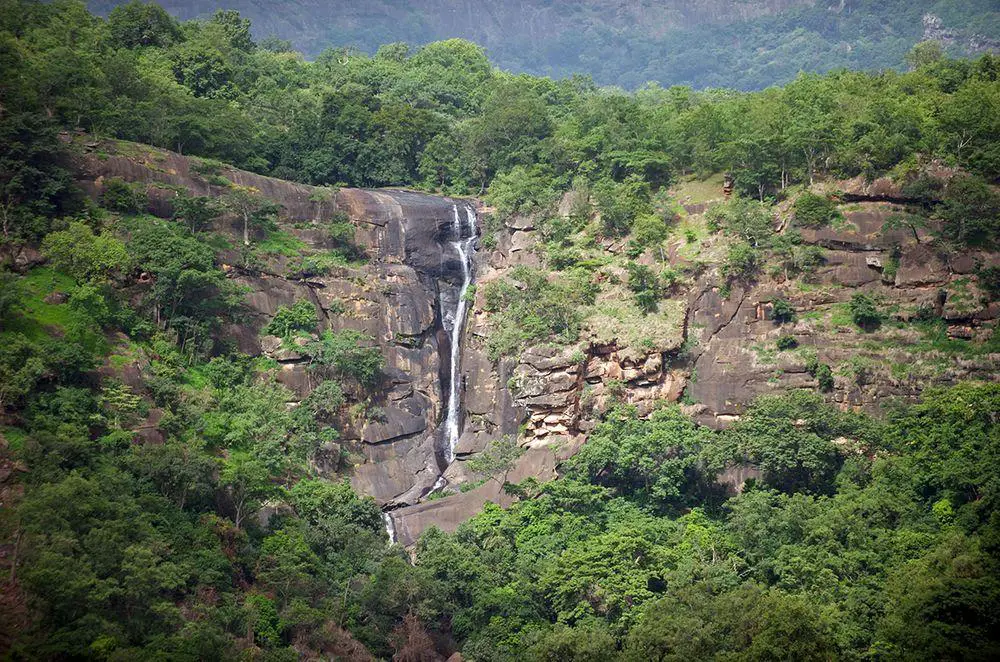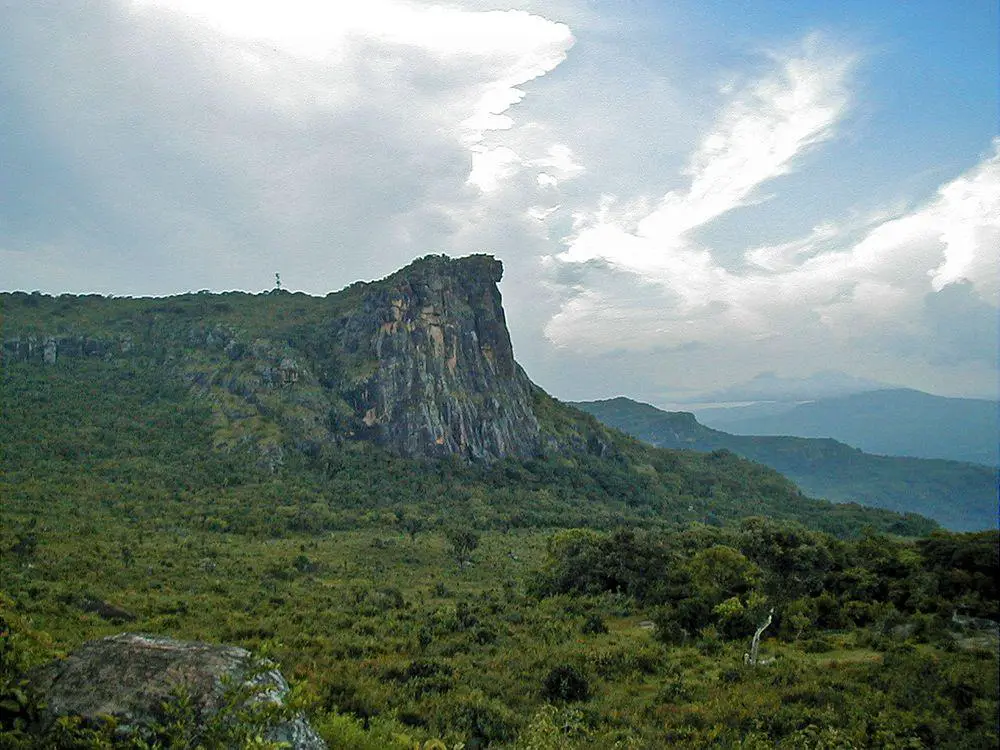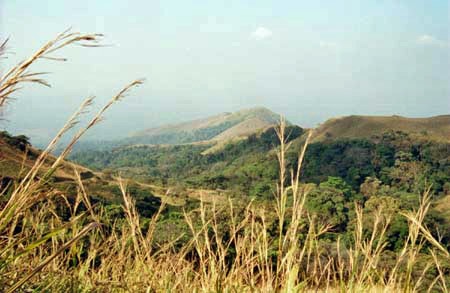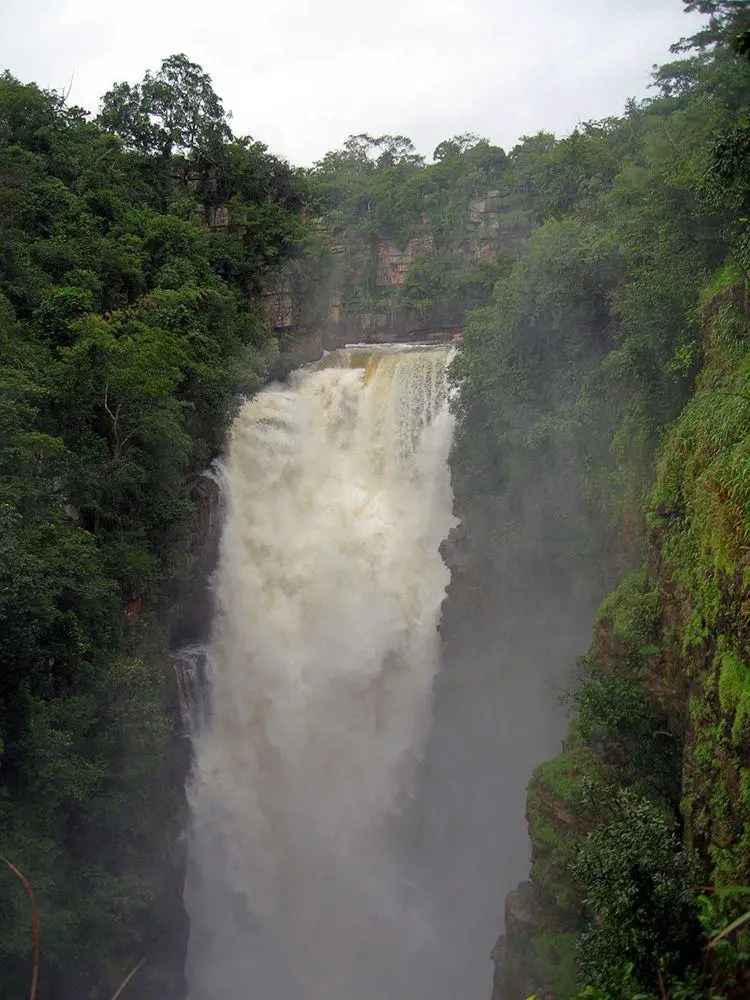Wondermondo 🢖 World 🢖 Wonders of Africa 🢖 Wonders of Guinea
Territory
Wonders of Guinea

 Highlights
Highlights
Although Guinea is a land with breathtaking landscapes and high biological diversity, it is not too easy to list specific wonders.
The country has beautiful tablelands and unusual mountain chains, such as Mount Nimba and Simandou mountains and is very rich with waterfalls. Most likely there are located several very tall water plunges that are not mentioned in tourist literature, e.g. perennial fall at 9.629, 12.910. Most certainly there are other interesting landmarks unknown to Wondermondo.
Map with the described wonders
If you see this after your page is loaded completely, leafletJS files are missing.
 Top 13 wonders of Guinea
Top 13 wonders of Guinea
Geological wonders
Kambadaga Falls
Mamou
Spectacular, 249 m tall and 69 m wide waterfall, consists of three major cascades.
Sumba Falls (Soumba Waterfall)
Kindia
Wide, spectacular waterfall.
Konkouré Falls
Mamou
Enormous waterfall.
Tinkisso Falls
Faranah
An unusual, up to 36 m tall and approximately 160 m wide waterfall. The water here falls down along an irregular cliff. Part of the stream now is diverted for hydropower production.
Kinkon Falls
Mamou
Some 80 m tall waterfall with a single cascade, located in the spectacular Kinkon canyon.
Le Voile de la Mariée
Kindia
Approximately 80 m tall waterfall.
Ditin Falls (Ditinn Falls)
Mamou
Some 80 m tall waterfall, a spectacular plunge of water from a large plateau.
Dame de Mali (Dame de Maali)
Labé
Spectacular cliff rising tall above the tropical forest. The profile of this enormous cliff resembles a profile of an old woman.

Biological wonders
Mount Nimba
Nzérékoré
Up to 1,752 m high chain of mountains with a high number of endemic species of plants and animals, such as Nimba otter shrew (Micropotamogale lamottei), Western Nimba toad (Nimbaphrynoides occidentalis) – viviparous toad. The summit of the mountain is covered with grassland but slopes – with tropical forest. Here lives also a group of chimpanzees capable to use stones as tools. Mountain for the most part consists of high-grade iron ore.

Pic de Fon forest
Nzérékoré
Pristine highland forest with many rare and endemic species. Here have been found amphibians and insects unique to this forest. Also a rich find of iron ore.
Architecture wonders
Balato, Baro, Koumana, and other Gberedou/ Hamana villages
Traditional Mandingo villages that for the most part consist of small, round huts. Huts are decorated. Well preserved traditional way of life, including the veneration of sacred ponds near villages.
Case de Palabre
Mamou
Assembly house of the former Fula chiefs. The round building is constructed in 1930 and is adorned with intricate carvings on interior walls, and decorated ceilings.
 Recommended books
Recommended books
Guinea: Masks, Music and Minerals
Guinea is rich, both materially and culturally, with the world’s largest bauxite reserves, gold, diamonds, and iron ore. It abounds in culture and traditions and has a remarkable, if often turbulent, history. Guinea is also exceptional in that it was the first French colony proudly to declare its independence, in 1958. Thereafter, the country suffered under the tyranny of Sekou Toure. Today, headed for the first time by an elected president, Guineans are trying to put their troubled past behind them and fulfill the promise of a decent life for all.
Guinea Conakry African Art, Culture, Politics, Economy: Inside-out of Guinea and Africa
Guinea Conakry African Art, Culture, Politics, Economy. Guinea has become a stable and open country with the election of the President of the Republic Alpha Condé in 2010. Since then, although the political context has sometimes been marked by a lack of dialogue between political actors, the tension has eased significantly.



